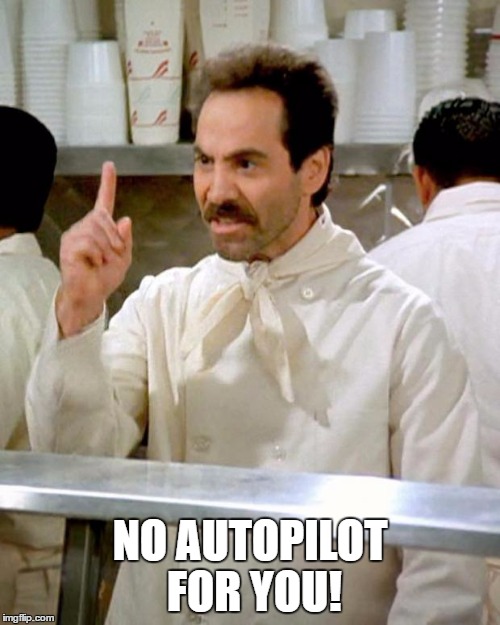Tesla is going about this all wrong, they need to stop admitting fault when they have none, and start fighting back, calling out the idiots, and standing their ground.
I'm highly supportive of the Soup Nazi style of business. Where you don't cater to stupid in any form or function. I think it works well for some kind of businesses especially of the service variety like Uber.
But, it doesn't work out so well for Tesla.
The media is already at the point where the attitude of Elon Musk is seen as being bit of an Egomaniac. Hell they've even compared him with Trump. Where they see him as being someone who does what he wants with really questionable statistics to back it up.
For Tesla to ignore the media would lead to a feeding frenzy, and that's not good for survivability. The cash flow of Tesla is enormous, and they simply can't afford any major drop in sales. They can't allow a perception problem to fester. Look at what happened to Audi with the unintended acceleration when it wasn't there fault at all. It pretty much killed them for all practical purposes for a long time.
Tesla needed to do something. They needed to do something that would signal to the media and to the NHTSA that they were doing something to address the problem. Both you, and I agree that there really wasn't a problem. That AP is a driving assist package and it's not at all meant as self driving. We both agree in principal that we should take responsibility on the road. But, the way we see it is NOT how the general population see's it and certainly not the NHTSA.
We live in a world where perception is 90% of the game. Tesla has more pre-sold cars than the number of cars it's actually sold in it's entire life.
So you do something to change the perception. You impose limitations which you and I know are silly, but the general population doesn't. They somehow for whatever twisted logic seem to believe that having your hand on a wheel somehow means you're in control.
They also will believe lots of techno mumble jumble which is what the new Radar stuff is until it's proven out. I do remain optimistically hopeful that it will prevent the accidents of the stupids where some driver allowed their Tesla to crash into a stalled vehicle because they somehow thought the car would stop automatically.
It's also important to keep in mind that this "event" is a tiny fraction of time in the big scheme of things. All this will be over and done with within 6-12 months.
I'm going to upgrade to ride the ride and see where it goes.
You likely won't and that's fine because it's your choice.



